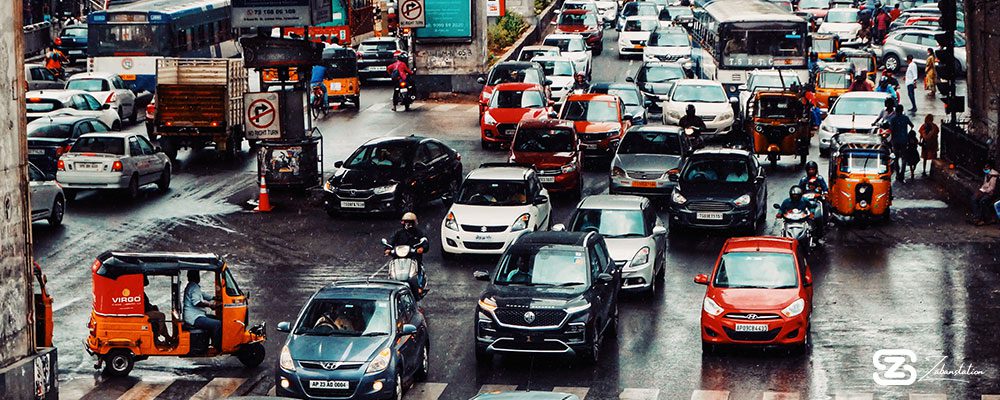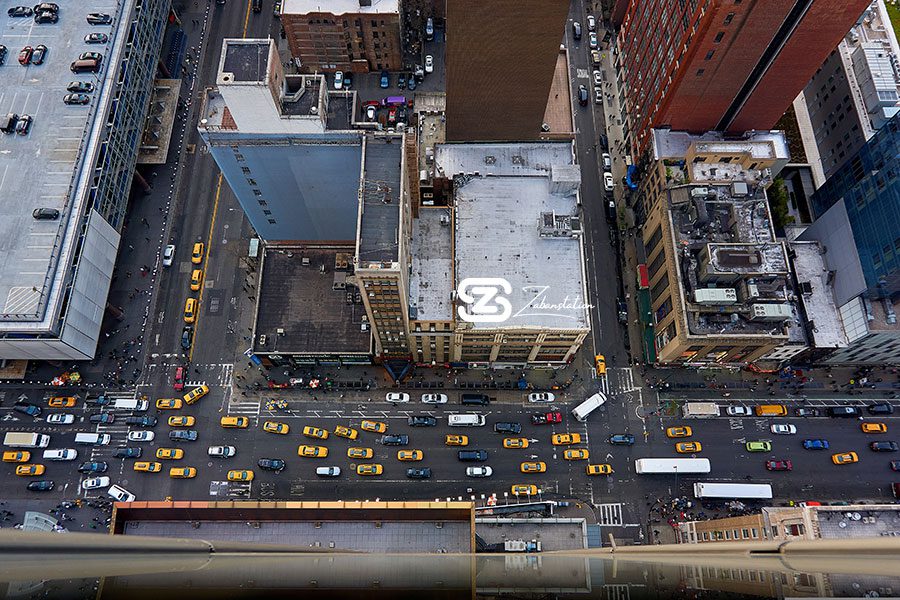
نحوه یادگیری زبان انگلیسی با پادکست
ابتدا باید متن فارسی این پادکست انگلیسی با متن را بخوانید تا به محتوای آن پی ببرید. سپس صدا را پخش کنید و گوش دهید و با متن بررسی کنید. یک بار به طور کامل گوش کنید و سعی کنید تا حد امکان موضوعات را درک کنید. در نهایت کلمات جدیدی را که نمیدانید پیدا کنید و یاد بگیرید. حالا دوباره پادکست را گوش کنید. در زیر برای شما آموزشی نوشته ایم، حتما دنبال کنید.
- مطالعه خلاصه فارسی پادکست
- گوش دادن به پادکست همراه با مشاهده متن انگلیسی
- پیدا کردن و یادگیری لغات جدید
- گوش دادن مجدد به پادکست همراه با متن انگلیسی
- گوش دادن به پادکست بدون متن
- پاسخ به آزمون مربوط به پادکست
خلاصهای از پادکست انگلیسی حل مشکل ترافیک با هوش مصنوعی
گوگل اعلام کرده است که سامانهای قدرت گرفته از هوش مصنوعی به نام “پروژه نور سبز” (Project Green Light) به بهبود جریان ترافیک در شهرهای بزرگ جهان کمک میکند. این سامانه در حال حاضر در ۱۲ شهر در دسترس است و هدف پروژه کاهش مصرف سوخت و کاهش آلودگی هوا یا انتشارات از خودروهاست.
گوگل ابتدا در سال ۲۰۲۱ این برنامه را معرفی کرد که در آن زمان این سامانه را در چهار نقطه از اسرائیل تست میکرد. از آن زمان، این شرکت پروژه نور سبز را به صورت پیوسته گسترش داده است و شهرهایی مانند بنگالور، بوداپست، جاکارتا، منچستر، حیفا، هامبورگ، ریو دو ژانیرو و سیاتل هم در این برنامه شرکت میکنند.
سیستم پروژه نور سبز از دادههای رانندگان حاصل از Google Maps استفاده میکند و از روشهای هوش مصنوعی برای ایجاد مدلهای تقاطعها استفاده میکند. این داده از Maps همچنین برای ایجاد مدلی در مورد نحوه تعامل چراغهای راهنمایی ترافیکی نیز مورد استفاده قرار میگیرد.
این مدلسازی برای تقاطعها عوامل متعددی را در نظر میگیرد از جمله ساختار خیابانها، جریان ترافیک، زمانبندی چراغها و نحوه تعامل خودروها با چراغها. این مدلها برای کاهش زمان توقف و شروع و ایجاد جریان ترافیکی نسبتاً صاف و بهینه، به عملیات بهینهسازی میپردازند. گوگل میگوید هدف یکی از اهداف آن این است که چندین تقاطع را به صورت همزمان بهینهسازی کند تا برای خودروهای موجود در جادهها “موجهای چراغهای سبز” ایجاد کند.
نتایج به دست آمده از فرآیند مدلسازی به مهندسین ترافیک در شهرهایی که برنامه در آنها اجرا میشود تحویل داده میشود و آنها میتوانند از این اطلاعات برای تغییر برنامههای ترافیک موجود برای بهبود جریان و کاهش انتشارات خودروها استفاده کنند. گوگل میگوید که این تغییرات میتواند در عرض چند دقیقه با استفاده از سیستمهای کنترل ترافیکی موجود در شهرها انجام شود.
یوسی ماتیاس از گوگل اعلام کرد که اطلاعات ابتدایی جمعآوری شده از این برنامه نشان داد که در مجموع تا ۳۰ درصد توقف در تقاطعها کاهش یافته و انتشارات تا ۱۰ درصد کاهش پیدا کرده است. این نتایج بر اساس آزمونهایی انجام شده در ۷۰ تقاطع در ۱۲ شهر در سالهای ۲۰۲۲ و ۲۰۲۳ محاسبه شدهاند. گوگل ادعا میکند که این اقدام میتواند به صرفهترین و کاهندهترین روش برای صرفهجویی در مصرف سوخت و کاهش انتشارات خودروها برای تا ۳۰ میلیون سفر ماهیانه باشد.
ماتیاس اشاره کرد که سیستمهای فعلی جمعآوری دادههای ترافیکی برای مهندسین شهری گران و دشوار هستند. این به معنای استفاده از دادهها و روشهای قدیمی برای بهبود جریان ترافیک است. او اضافه کرد که این روشها اطلاعات زیادی مانند پروژه نور سبز ارائه نمیدهند.
ماتیاس مثالی از یک پیشنهادی که به برنامهریزان شهری ارائه میشود آورد. آنها ممکن است به مهندسین پیشنهاد دهند تا چراغهای راهنمایی در تقاطعهای مجاوری را که در حال حاضر ارتباطی ندارند، اتصال دهند. گوگل اعلام کرده است که این سیستم به راحتی گسترش پذیر است تا هزاران تقاطع را همزمان برای بهبود جریان ترافیک در شهرها بررسی کند و مهندسان شهری قادر به مشاهده پیشرفت و نتایج کامل تغییرات در عرض هفتهها هستند.
گوگل در اعلام خود شهرهایی که با این پروژه همکاری کردهاند، اظهاراتی از برخی مقامات شهری را نیز درج کرده است. وینیت کومار گویال کمیسر پلیس کلکاتا، هند، گفته است که این سیستم به عنوان یک ابزار ارزشمند برای پلیس ترافیک تبدیل شده و منجر به “ترافیک ایمنتر، موثرتر و منظمتر” و کاهش “گرفتگی در تقاطعهای پرتردد” شده است. گوگل اعلام کرده است که قصد دارد پروژه نور سبز را به شهرهای دیگر گسترش دهد و برنامهریزان و مهندسان شهری از سراسر جهان را به پیوستن به لیست انتظار برای این برنامه دعوت میکند.
Google says an artificial intelligence (AI)-powered system it created is helping improve traffic flow in major world cities.
The system, called Project Green Light, is currently in use in 12 cities. The project aims to save fuel and lessen air pollution, or emissions, from automobiles.
Google first announced the program in 2021, when it was testing the system in four areas of Israel. Since then, the company has kept expanding Project Green Light. Among cities now taking part in the program are Bangalore, Budapest, Jakarta, Manchester, Haifa, Hamburg, Rio de Janeiro, and Seattle.
In an online announcement, Google’s Yossi Matias explained the latest progress. He noted that the system is being tested in areas with severe traffic issues. Generally, this is at major crossings with heavy traffic and complex traffic lights. These areas where vehicles start and stop are known as intersections.
The company said research has shown that at such intersections, automobile emissions can be 29 times higher than on open roads. In addition, Google’s own research found that vehicles that must stop and start account for about half of those emissions.
Project Green Light uses individual driver data from Google Maps. This data is combined with AI methods to produce models of each intersection where the system is in place, the company says. The data from Maps is also used to create another model on how different traffic lights interact.
The modeling process for intersections considers several elements. These include the structure of streets, traffic flows, signal scheduling and how the vehicles interact with lights.
The models are used to reduce stop and start times and create smoother traffic flows, a process called optimization. Google says one goal is to optimize multiple intersections at the same time to create “waves of green lights” for vehicles on the road.
Results from the modeling process are then handed over to traffic engineers in the cities where the program operates. The engineers can use this information to change existing traffic plans to improve flow and reduce vehicle emissions. Google says these changes can be completed within minutes using the traffic control systems the cities already have in place.
Google’s Matias shared that early numbers collected on the program showed that overall, stops at intersections were reduced by up to 30 percent. In addition, emissions were reduced by up to 10 percent.
The results were based on testing that happened at 70 intersections in 12 cities during 2022 and 2023. The company said it estimates “this can save fuel and lower emissions for up to 30 million car rides monthly.”
Matias noted that current systems used to collect traffic data for city engineers are costly and difficult to operate. This means many cities are forced to use outdated data and methods to improve traffic flows. Those methods, Matias added, do not provide the wealth of information that Project Green Light can.
Matias gave an example of a suggestion to be provided to city planners. They might urge engineers to link up signals in neighboring intersections that are currently not connected. Or they could suggest how to time traffic lights “so that traffic flows more effectively along a stretch of road.”
Google says the system is designed to be easily expandable to examine thousands of intersections at the same time to improve traffic flows throughout cities. And city engineers are able to watch progress and see full results of the changes within weeks.
In its announcement, the company included statements from some city officials who have cooperated with Google on the project.
Vineet Kumar Goyal is a police commissioner in Kolkata, India. He said the system had already become a valuable tool for traffic police. He noted it had led to “safer, more efficient, and organized traffic flow” and cut “gridlock at busy intersections.”
Google says it plans to keep expanding Project Green Light to additional cities and is inviting city planners and engineers from across the world to join a waiting list for the program.
Words in This Podcast
لغات مهم این پادکست
efficient – adj. working well and not wasting time and energy
gridlock – n. heavy traffic conditions prevented vehicles from moving in any direction
Quiz – Google Says AI-powered System Is Improving City Traffic Flows
آزمون پادکست انگلیسی حل مشکل ترافیک با هوش مصنوعی
Yossi Matias said the result can be that cities are forced to use outdated data and methods to improve traffic flows.
An example Yossi Matias gave was a suggestion to link up traffic signals that are not currently connected.
The story says vehicles stopping and starting at signal lights is one of the major causes of traffic-related pollution in cities.
The story says Project Green Light collects data from Google maps to create models of intersections.










دیدگاهها (0)